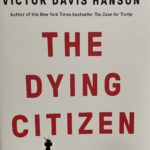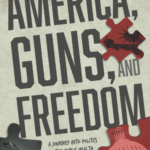Democracy Codes
Stefan Braun’s analysis of speech codes in Democracy Off Balance: Freedom of Expression and Hate Propaganda in Canada, is not relevant only to the situation in the author’s country. In this country, despite the protections of the Constitution, there is censorship. Much of this censorship occurs on the campuses of college and universities where speech codes are in effect in the name of diversity. The codes intend to foster an atmosphere—just as Canada’s laws intended—where there is no discrimination of any kind and no adverse psychological effects and individuals deemed ‘minorities.’ The ‘diversity’ is diversity in all but thought:
Speech codes at universities seek to transform the culture of an institution into a culture of homogeneity. The codes want to snuff out any semblance of disagreement in order to create a student body that never clashes.
While Braun uses the terminology of hate propaganda law, such laws end up governing more than would be considered hate speech. For instance, a recent proposal by faculty at the University of Alabama would ban any behavior, including speech, considered “demeaning”—demeaning, that is, in the eyes of administrators. And that, as Braun points out, is a significant problem with speech codes. The laws, which intend to create an egalitarian society, are inherently unfair—those who make the laws wield far more power than those who are forced to abide by it. Speech codes can never be objective—they are enforced by biased parties, in the case of colleges and universities, administrators and professors. As Braun writes, “Hate law tends to become whatever those with the power to threaten or enforce it think it is in the particular circumstances.” Thus, an administrator or professor with an agenda can twist “demeaning” behavior in order, for instance, to silence opinions contrary to his own.
Just as Braun writes that speech codes are harmful to Canadian society, speech codes are counter to the missions of colleges and universities. Quite simply, speech codes, despite the theory behind them, harm free society. They stifle the expression of ideas and squelch diversity thought, and, if effective, they would eliminate the expression of ideas and diversity of thought.
And such conditions, as critics have speech codes have long asserted, have no place on college campuses.
Speech codes will not simply disappear. The failure of the hate laws is not the result of bad policy in the eyes of the arbiters, but the result of not enough hate laws, notes Braun. Thus, in the eyes of censors, dissent in a society with speech codes proves the need for more and tougher laws. And, as Braun notes, the longer such policies are in place, the harder they are to end.
ignorance, intolerance, and opportunism.
In Canada, legislators and activists introduced laws against hate speech to promote democracy. The Canadian movement to limit speech began in the years following World War II, when there was fear that fascism spurred by neo-Nazi activity “might gain a foothold through the subconscious prejudices of a vulnerable public. In order to stave off the possible rise of political extremism, censors decided to circumvent the political process. Hate speech, as the Canadian government would have it, needed to be silenced for the good of the public.
Hate speech censorship has four functions, each of which, in the minds of censors, should contribute beneficially to society. Censorship is often carried out, ironically, in defense of freedom. Braun writes that hate censorship intends
(2) to prevent psychological harm to targeted groups that would effectively impair their ability to positively participate in their community and contribute to society;
(3) to prevent both visible exclusion of minority groups that would deny them equal opportunities and benefits of Canadian society and invisible exclusion that would prevent their being accepted as equals;
(4) to prevent social conflagration and political disintegration.
Censorship in Canada has failed to eliminate hate speech, but it has managed to chill discussion and the dissemination of ideas. The law in Canada has been used as a substitute for discussion. Citizens and interest groups no longer defend their positions with words, rather they turn to the courts and attempt to outlaw a view with which they disagree.
Larry Scholer is a staff writer at Accuracy in Academia.



